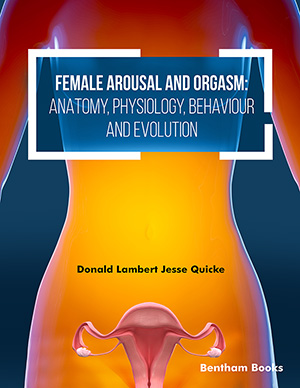Abstract
Background: Near-infrared spectroscopy (NIRS) has been used for monitoring cerebral oxygen saturation (rSO2) in neonates. There is a lack of data from low-middle income countries (LMIC) setting of cerebral rSO2 in neonates with encephalopathy of diverse etiologies. This study aimed to monitor cerebral rSO2 using NIRS in encephalopathic neonates to maintain the rSO2 between 55 to 85 % in the first 72 hours of admission to improve short-term neurodevelopmental outcomes (NDO).
Materials and Methods: This prospective cohort study enrolled encephalopathic neonates with hypoxic- ischemic encephalopathy (HIE) and non-HIE etiologies into 8 clinical categories. The cerebral rSO2 was monitored and targeted to be between 55 to 85 %, with predefined actions and management alterations over 72 hours. The neurodevelopmental assessment was conducted at 3, 6, and 9-12 months corrected age. Moreover, the motor and mental developmental quotients (MoDQ) (MeDQ) were recorded and compared to historical control.
Results: A total of 120 neonates were enrolled and assessed for NDO. The MoDQ (mean ± SD) was 92.55 ± 14.85, 93.80 ± 13.20, 91.02 ± 12.69 and MeDQ (mean ± SD) was 91.80 ± 12.98, 91.80 ± 13.69, 88.41 ± 11.60 at 3, 6 and 9-12 months. The MoDQ and MeDQ scores of the historic cohort at 12 months were 86.35 ± 20.34 and 86.58 ± 18.27. The mean difference [MD (95 %CI)] for MoDQ was - 4.670 (- 8.48 to - 0.85) (p=0.0165) and for MeDQ was - 1.83 (- 5.26 to 1.6) (p=0.29). There was a negative correlation between the composite developmental quotient (CoDQ) with mean rSO2 and a positive correlation with cerebral fractional tissue oxygen extraction (CFTOE). Neonates with HIE and neonatal encephalopathy (NE) (n=37/120) had the lowest motor and mental DQ on neurodevelopmental assessment. Clinical categories, neonatal meningitis (NM), and intraventricular hemorrhage (IVH) improved in DQ scores over the study period.
Conclusion: Monitoring and maintaining cerebral rSO2 between 55-85 % through appropriate management changes improved neurodevelopmental scores at the 12-month follow-up in neonates with encephalopathy caused by varied etiologies.
Keywords: Cerebral oxygenation, CFTOE, cerebral rSO2, near-infrared spectroscopy, neonatal encephalopathy, neurodevelopmental outcomes.
[http://dx.doi.org/10.1136/archdischild-2015-309639] [PMID: 28389438]
[http://dx.doi.org/10.1016/j.earlhumdev.2010.05.010] [PMID: 20554402]
[http://dx.doi.org/10.1016/j.siny.2021.101265] [PMID: 34305025]
[http://dx.doi.org/10.1038/pr.2013.206] [PMID: 24366463]
[http://dx.doi.org/10.1055/s-0038-1646954] [PMID: 29702712]
[http://dx.doi.org/10.2174/157339631001140408121507] [PMID: 25055866]
[http://dx.doi.org/10.1016/j.dcn.2010.07.004] [PMID: 22436417]
[http://dx.doi.org/10.1136/bmj.g7635] [PMID: 25569128]
[http://dx.doi.org/10.1016/j.jpeds.2015.11.053] [PMID: 26743498]
[http://dx.doi.org/10.1117/1.JBO.20.3.037009] [PMID: 25806662]
[http://dx.doi.org/10.1055/s-0034-1396692] [PMID: 25594221]
[http://dx.doi.org/10.1007/s13312-013-0170-5] [PMID: 23255692]
[http://dx.doi.org/10.1007/s12098-010-0149-3] [PMID: 20814839]
[http://dx.doi.org/10.1001/jama.292.19.2357] [PMID: 15547163]
[http://dx.doi.org/10.1177/000992280104000901] [PMID: 11583045]
[http://dx.doi.org/10.1542/peds.2007-2822] [PMID: 18595988]
[http://dx.doi.org/10.1038/s41390-019-0697-9] [PMID: 31785594]
[http://dx.doi.org/10.1001/jamapediatrics.2019.4011] [PMID: 31710357]
[http://dx.doi.org/10.1542/peds.2015-0944] [PMID: 26598455]
[http://dx.doi.org/10.1055/s-0039-1697674] [PMID: 31600790]
[http://dx.doi.org/10.1055/s-0037-1601564] [PMID: 28395364]
[http://dx.doi.org/10.1055/s-0033-1349894] [PMID: 23873114]
[http://dx.doi.org/10.1136/bmjpo-2017-000175] [PMID: 29637170]
[http://dx.doi.org/10.1038/s41372-017-0007-5] [PMID: 29242570]
[http://dx.doi.org/10.1016/j.earlhumdev.2017.07.008] [PMID: 28772198]
[http://dx.doi.org/10.1038/pr.2017.154] [PMID: 28665923]
[http://dx.doi.org/10.3109/14767058.2015.1077221] [PMID: 27480206]
[http://dx.doi.org/10.1186/s12887-018-1054-6] [PMID: 29452581]
[http://dx.doi.org/10.1111/apa.14463] [PMID: 29908039]



























